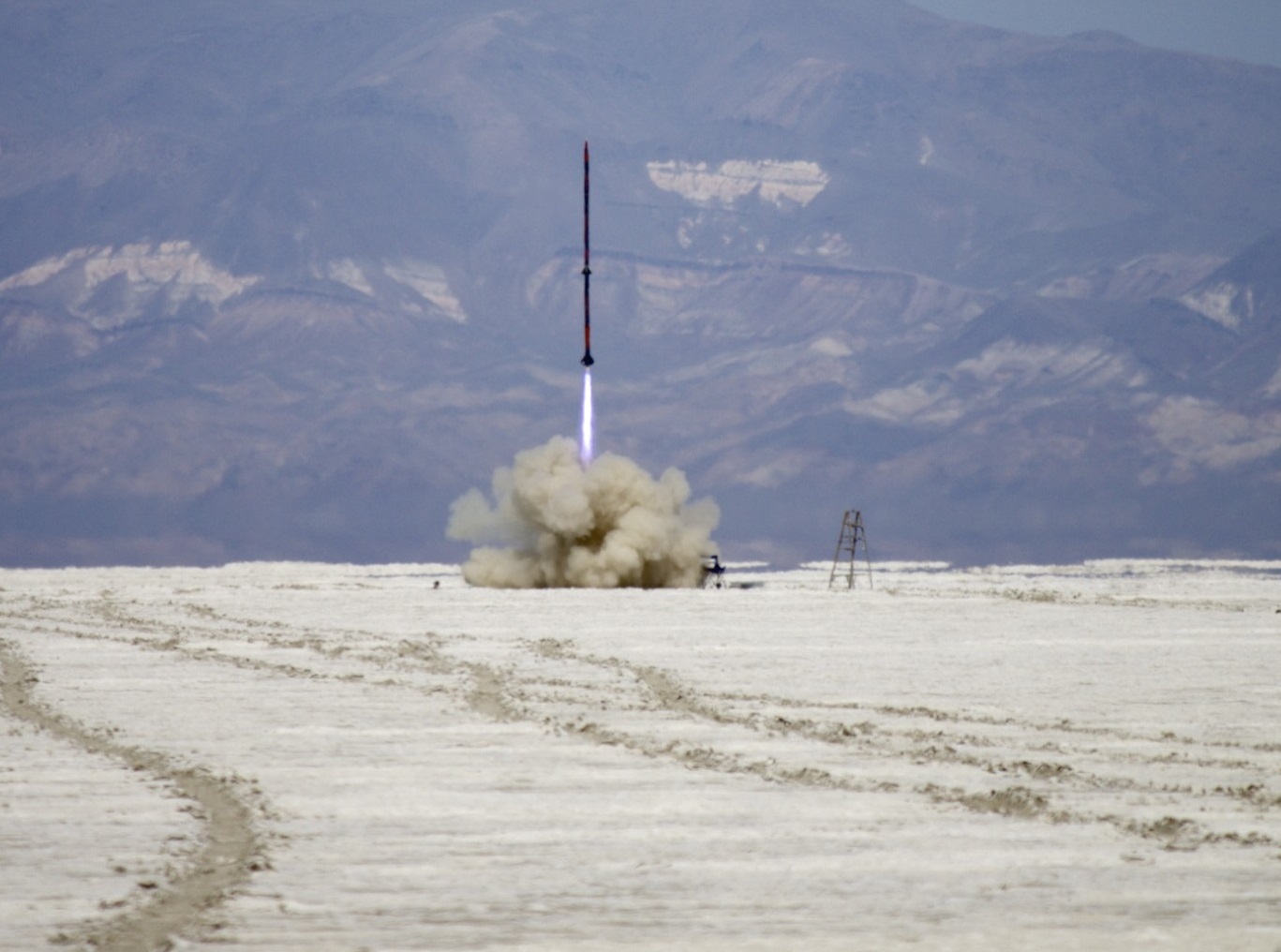

The Penetrator is an ongoing project funded by NASA's NIAC research project. The main goal of the Penetrator is to create a rocket capable of sample return missions whether it is from hazardous events here on Earth or asteroids in outer space. Our rocket is built to be launched towards the ground with feed ports in the nose cone to collect samples as it penetrates the surface. The interior has a crumple zone to be able to withstand the high amounts of energy the rocket will experience. There are eight motors attached to the exterior of the body tube to protect the soil sample during penetration. Testing began three years ago Blackrock, Nevada where Phase I was completed. Phase II will be continuing this June at China Lake Naval Air Weapons Station.
To escape Earth's atmosphere, traditional high powered rockets require significant amounts of fuel. Rocket fuel, whether in solid state or liquid chemical state, is very expensive and often takes up a majority of the budget allotted for a rocket. Various methods have been explored to reach higher altitudes with rockets while keeping the propellant mass fraction low. In the 1950's, James Van Allen, of the Van Allen radiation belts, used weather balloons to lift rockets to high altitudes and take early video of solar activity. This rocket-balloon system was named the Rockoon.
The Rockoon is a potentially cost-efficient way of conducting high altitude sounding experiments and putting low mass payloads in low earth orbit. By launching from high up in the atmosphere, the rocket uses less fuel because the distance to the desired altitude is shorter and the atmosphere is less dense, meaning less drag on the rocket. While Van Allen and others, such as JP Aerospace, have had successful Rockoon launches, they have all been sounding rockets (i.e. the rocket does not enter orbit but comes down after reaching apogee).
The long-term goal of our research project is to use our Rockoon system to deliver a payload into a shallow orbit around the Earth. The Rockoon system uses two weather balloons to lift a two-stage high powered rocket and electronics package to a significant height. The rocket is remotely fired from a ground and recovered using GPS and radio frequency transmitters. In March of 2014, the two-stage rocket prototype was launched from an altitude of 6,000ft at Black Rock, NV. The rocket had predicted apogee of 45,000ft.